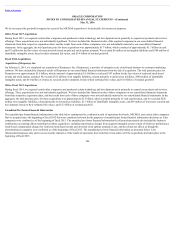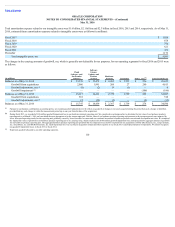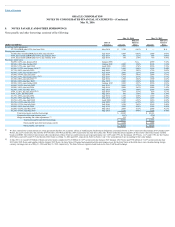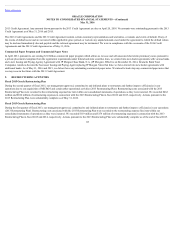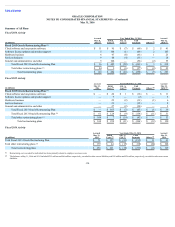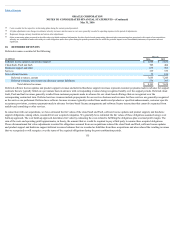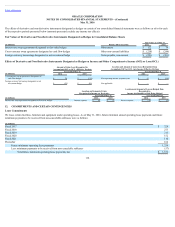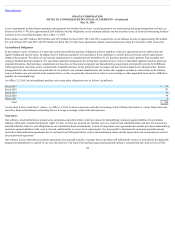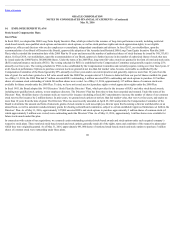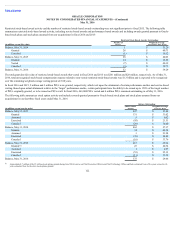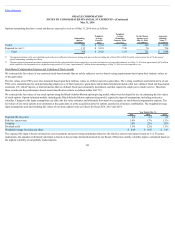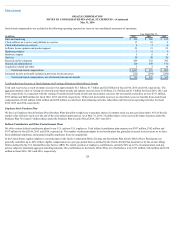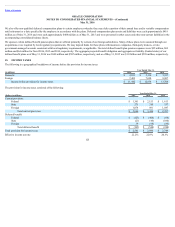Oracle 2015 Annual Report Download - page 117
Download and view the complete annual report
Please find page 117 of the 2015 Oracle annual report below. You can navigate through the pages in the report by either clicking on the pages listed below, or by using the keyword search tool below to find specific information within the annual report.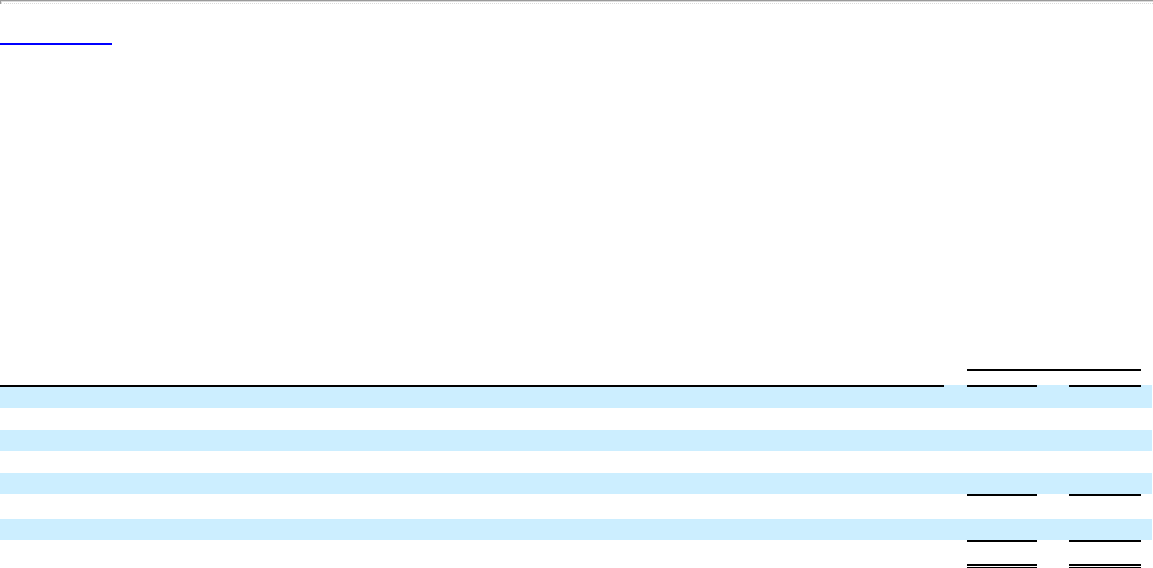
Table of Contents
ORACLE CORPORATION
NOTES TO CONSOLIDATED FINANCIAL STATEMENTS—(Continued)
May 31, 2016
Costs recorded for the respective restructuring plans during the current period presented.
All plan adjustments were changes in estimates whereby increases and decreases in costs were generally recorded to operating expenses in the period of adjustments.
Represents foreign currency translation and certain other adjustments.
Other restructuring plans presented in the tables above included condensed information for other Oracle-based restructuring plans and other restructuring plans associated with certain of our acquisitions
whereby we continued to make cash outlays to settle obligations under these plans during the periods presented but for which the periodic impact to our consolidated statements of operations was not
significant.
10. DEFERRED REVENUES
Deferred revenues consisted of the following:
May 31,
(in millions) 2016 2015
Software license updates and product support $ 5,864 $ 5,635
Cloud SaaS, PaaS and IaaS 705 404
Hardware support and other 675 703
Services 339 379
New software licenses 72 124
Deferred revenues, current 7,655 7,245
Deferred revenues, non-current (in other non-current liabilities) 536 393
Total deferred revenues $ 8,191 $ 7,638
Deferred software license updates and product support revenues and deferred hardware support revenues represent customer payments made in advance for support
contracts that are typically billed on a per annum basis in advance with corresponding revenues being recognized ratably over the support periods. Deferred cloud
SaaS, PaaS and IaaS revenues generally resulted from customer payments made in advance for our cloud-based offerings that are recognized over the
corresponding contractual term. Deferred services revenues include prepayments for our services business and revenues for these services are generally recognized
as the services are performed. Deferred new software licenses revenues typically resulted from undelivered products or specified enhancements, customer-specific
acceptance provisions, customer payments made in advance for time-based license arrangements and software license transactions that cannot be separated from
undelivered consulting or other services.
In connection with our acquisitions, we have estimated the fair values of the cloud SaaS and PaaS, software license updates and product support, and hardware
support obligations, among others, assumed from our acquired companies. We generally have estimated the fair values of these obligations assumed using a cost
build-up approach. The cost build-up approach determines fair value by estimating the costs related to fulfilling the obligations plus a normal profit margin. The
sum of the costs and operating profit approximates, in theory, the amount that we would be required to pay a third party to assume these acquired obligations.
These aforementioned fair value adjustments recorded for obligations assumed from our acquisitions reduced the cloud SaaS and PaaS, software license updates
and product support and hardware support deferred revenues balances that we recorded as liabilities from these acquisitions and also reduced the resulting revenues
that we recognized or will recognize over the terms of the acquired obligations during the post-combination periods.
115
(3)
(4)
(5)
(6)



